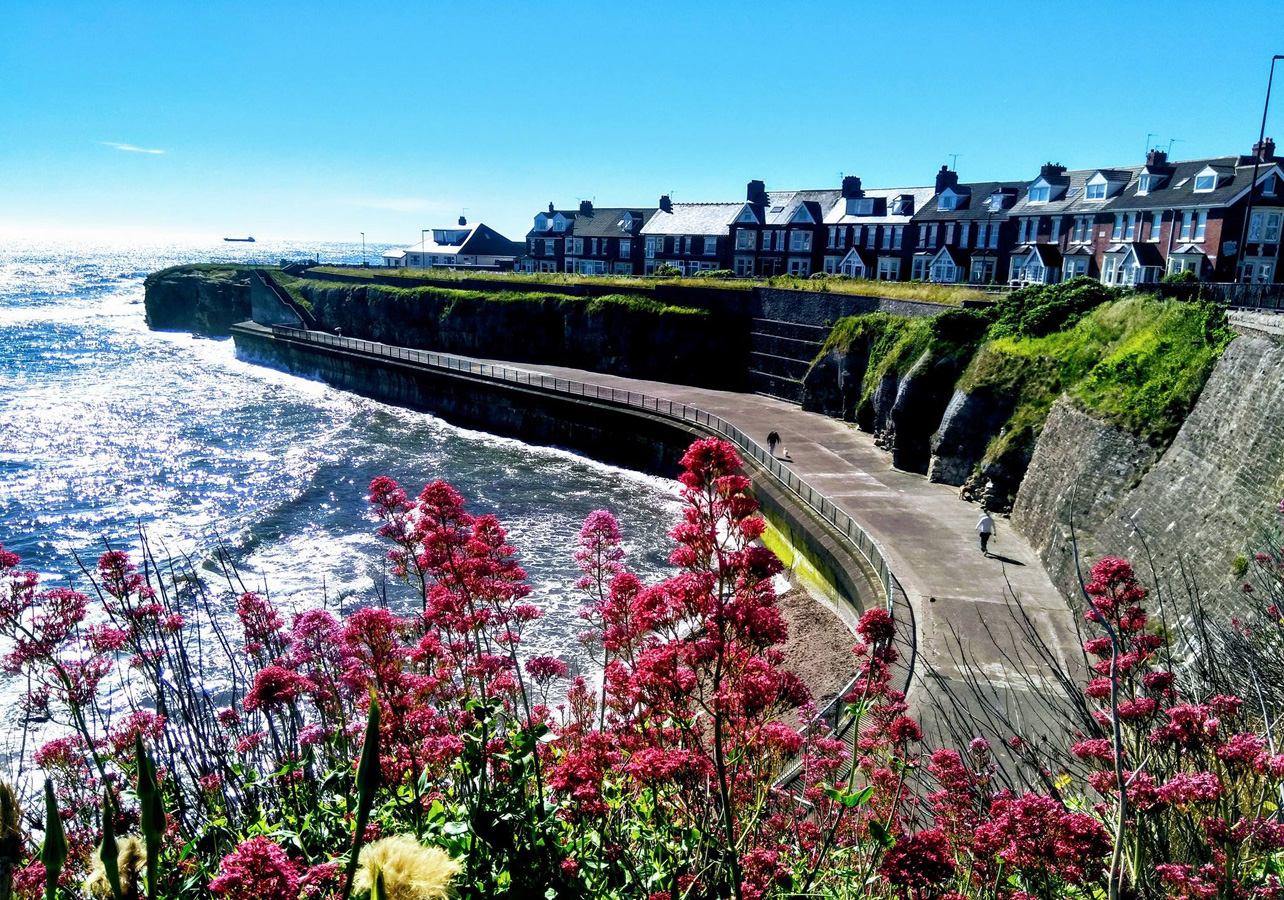4-star self-catering apartments, with spectacular views over Cullercoats Bay – admire the…
Our View
This is one of the very earliest Christian sites in England. It was founded in the early seventh century, and was so revered that two early Anglo-Saxon royal converts – Oswin, king of Deira, who was murdered in AD 651 and Osred, king of Northumbria, who was killed in 792, are buried here. Both died through treachery. It was hard to know who to trust in the many centuries of shifting loyalties as the Dark Ages drew to a close. As the Danes became more of a menace in the late eigth century, the monks of Tynemouth made some attempt at fortifying their home. However, the Danes came again, and after a final raid in ad 875 the priory was destroyed. Even so, the site was a natural stronghold, so in the mid-11th century Tostig Godwinson, Earl of Northumbria, took it as his seat. Tostig died at Stamford Bridge in 1066, fighting his brother Harold for the throne of England. The next few centuries are a bit confused, but by the late 13th century Tynemouth had become a combination of castle and monastery, with battlements commanding the entrance to the river. It went on being a castle long after Henry VIII’s dissolution, and as late as World War II there were coastal defence guns emplaced here. You can see traces of the history of the priory and castle today, from the underground magazines beneath the 20th-century coastal battery to the priory arches and the sturdy remains of medieval walls.
Facilities – at a glance
Dogs allowed
Assist dogs allowed
Features
- Parking nearby
- Facilities: Disabled parking, wheelchair loan, induction loop (shop)
- Open all year
- Opening Times: Open Apr-Sep, see website for details; Oct, daily 10-5; Nov-11 Feb & 17 Feb-29 Mar, Sat-Sun 10-4; 12-16 Feb, daily 10-4 (last admission 30 minutes before closing). Closed 24-26 Dec and 1 Jan. Gun Battery access limited, please ask site staf
Also in the area
About the area
Discover Tyne & Wear
The metropolitan county of Tyne and Wear encompasses Newcastle-upon-Tyne, Gateshead, South Shields and Sunderland, as well as part of Hadrian’s Wall. The county is cut through by the two rivers after which it is named. The area grew prosperous on coal and shipbuilding, and buildings of Victorian grandeur reflect its heyday. George Stephenson established an ironworks here in 1826, and the first engine on the Stockton and Darlington railway was made in Newcastle.
Newcastle’s ‘new castle’ is believed to date from the 11th century, though the present keep dates from the 12th. Other ancient buildings include the cathedral and Guildhall, while contemporary constructions include the Metro, which links Newcastle to Gateshead (along with several bridges), and the Metro Centre in Gateshead, Europe’s largest indoor shopping and leisure complex.
Jarrow, five miles east of Newcastle, is remembered for the Jarrow Crusade of 1936, when 200 men marched to London to bring attention to the plight of unemployed shipbuilders. The town was also the home of monk-scholar, the Venerable Bede, whose 8th-century work, Historia Ecclesiastica Gentis Anglorum, was the first important history written about the English.
Nearby stays
Places to Stay
Dining nearby
Restaurants and Pubs
Why choose Rated Trips?
Your trusted guide to rated places across the UK
The best coverage
Discover more than 15,000 professionally rated places to stay, eat and visit from across the UK and Ireland.
Quality assured
Choose a place to stay safe in the knowledge that it has been expertly assessed by trained assessors.
Plan your next trip
Search by location or the type of place you're visiting to find your next ideal holiday experience.
Travel inspiration
Read our articles, city guides and recommended things to do for inspiration. We're here to help you explore the UK.















